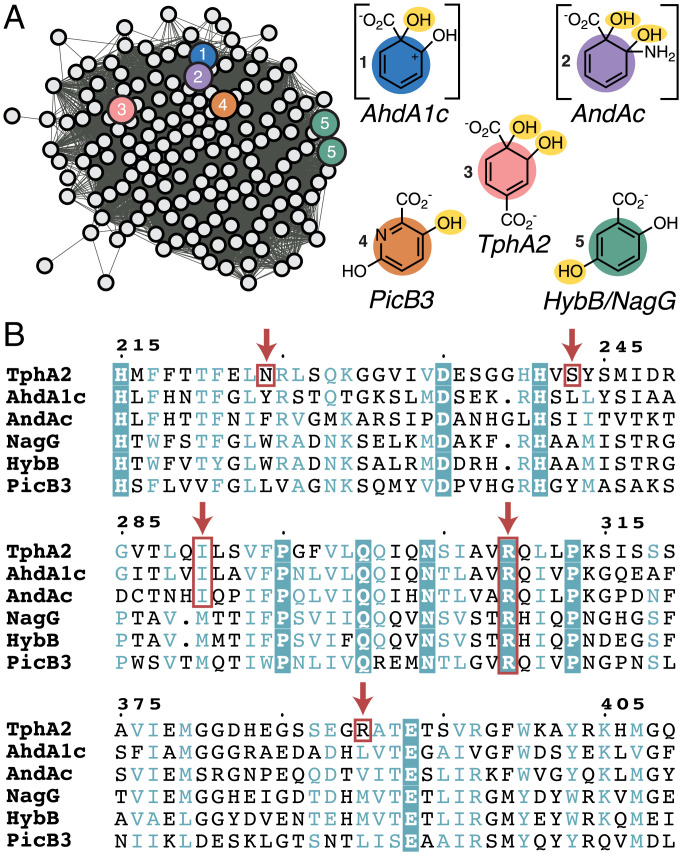Fig. 6.
Sequence relationships of aryl carboxylate ROs. (A) A single cluster from a full SSN generated for PFAM00848 (SI Appendix, Fig. S22) containing 1,812 RO α-subunit sequences, including TphA2 (α-TPADO) and others with characterized functions relating to aryl carboxylate oxygenation (indicated by circles with color), is shown. To the right of the cluster are structures illustrating where the enzymes are proposed to hydroxylate their aryl carboxylate substrates (O2-derived hydroxyl groups are highlighted in yellow). Intermediates are shown in brackets to clarify where hydroxyls are installed prior to their spontaneous breakdown to yield CO2, H2O, and catechol (AhdA1c) or CO2, NH3 (protonating to form NH4+ at neutral pH), and catechol (AndAc). (B) A multiple sequence alignment of the five functionally characterized homologs from A. Orange boxes and arrows indicate residues proposed to interact with a substrate. R309 is highly conserved in these five sequences and across the cluster, suggesting that it has a functionally significant role. N224, S243, and R390 are only found in TPADO. I290 is conserved in TphA2, AhdA1c, and AndAc.

